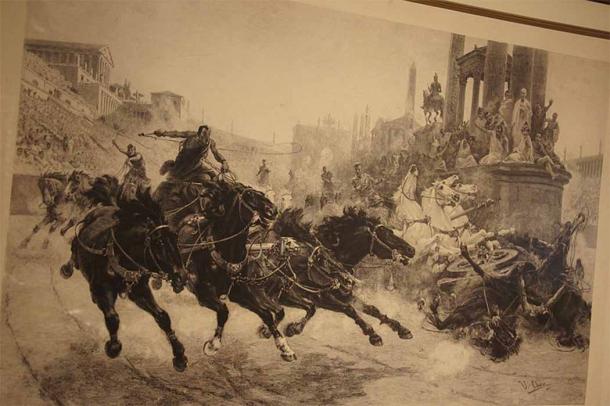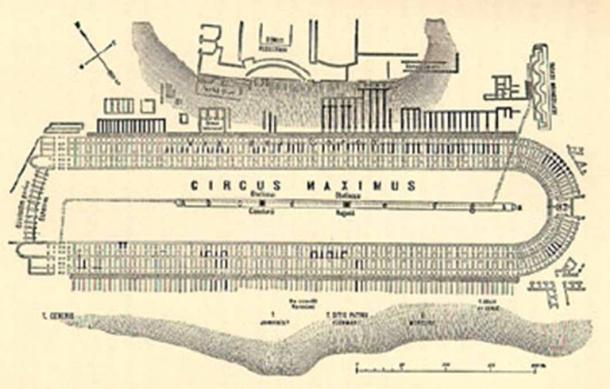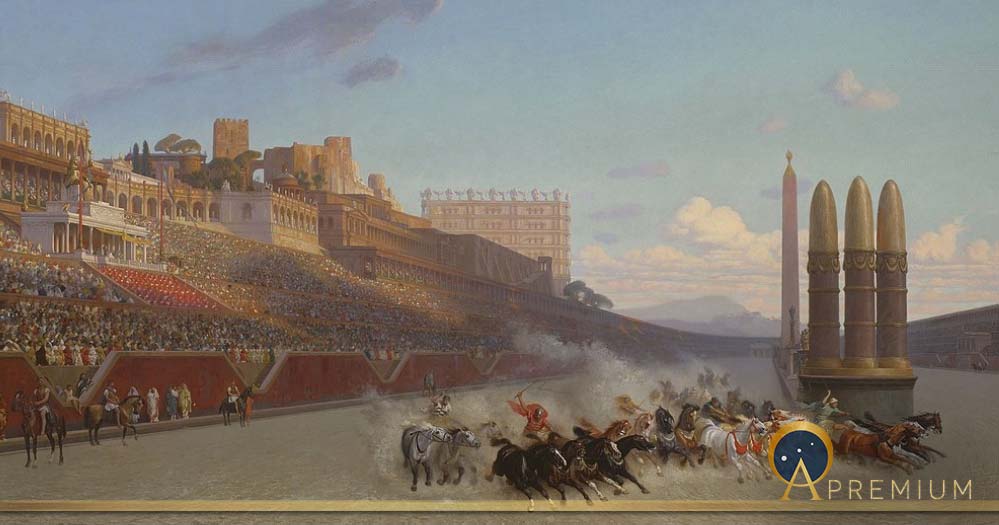The Life Of A Celebrity Roman Chariot Horse
“The horses burst through the sky and with swift-hooved feet cut a dash through the clouds, which blocked their way as borne on wings they passed the east wind.” (Ovid, Metamorphoses II.157–60) The Formula One of the Roman world was the high-adrenalin sport of chariot racing where rival teams of superstar charioteers and horses destroyed the opposition in front of thousands of roaring fans. It may seem strange to skip forward to 20th-century Hollywood now, but it is here that we can get some idea of just how risky chariot racing was. The closest we can get to the reality of this Roman sport is by taking a look at what was perhaps the most dangerous shoot in film history: the chariot race in the 1925-silent movie Ben-Hur.

Depiction of the famous chariot race crash of Ben Hur (Carrera de carros romanos fotograbado) (Poniol/ CC BY-SA 3.0)
The fact that the film industry had established no animal rights laws yet means the experience of the horses in Ben-Hur might be comparable to those on ancient circus tracks. During filming, a cash prize was offered to the stuntman who rode his chariot into first place, and second unit director B. Reeves Eason did not worry himself about the welfare of the horses on set: ‘If it limped, they shot it.’
This attitude, and the carrot of the cash reward, ramped up the risk-taking and resulted in a violent, crash-bang chariot race, which, by the end of shooting, saw the deaths of over one hundred horses. The final scene of the race featured a spectacular choreographed crash with five horses killed in this wreck alone. On one of the dangerous turns in the track – this time, totally unchoreographed – chariots and horses piled into the wreck and a photographic still of the accident – dead horses, smashed chariots and stuntmen sprawled and injured – was used in publicity shots for the film. It certainly reconstructs the dangers of this ancient sport and gives us an idea of just how perilous chariot racing was, particularly on those hazardous turns.

A plan of the Circus Maximus. The starting gates are to the left, and a conjectured start-line cuts across the track, to the right of the nearest meta. (Public Domain)
The Circus Maximus
With over 60 racecourses spread throughout its empire, from Carthage in modern-day Tunisia to tracks in Spain, Portugal and Egyptian Alexandria, charioteers and horses thrilled crowds across the Roman world.
Like this Preview and want to read on? You can! JOIN US THERE ( with easy, instant access ) and see what you’re missing!! All Premium articles are available in full, with immediate access.
For the price of a cup of coffee, you get this and all the other great benefits at Ancient Origins Premium. And - each time you support AO Premium, you support independent thought and writing.
Extract from Caroline Freeman-Cuerden’s Battle Elephants and Flaming Foxes.
Caroline Freeman-Cuerden has a master’s degree in Classics and Ancient History. Caroline is the author of Veterans’ Voices: Coventry’s Unsung Heroes of the Second World War and her latest book is called: Battle Elephants and Flaming Foxes.
Top Image: Chariot race in Rome's Circus Maximus, as if seen from the starting gate. The Palatine Hill and Imperial palace are to the left, by Jean Léon Gérôme (1876) (Public Domain)


















